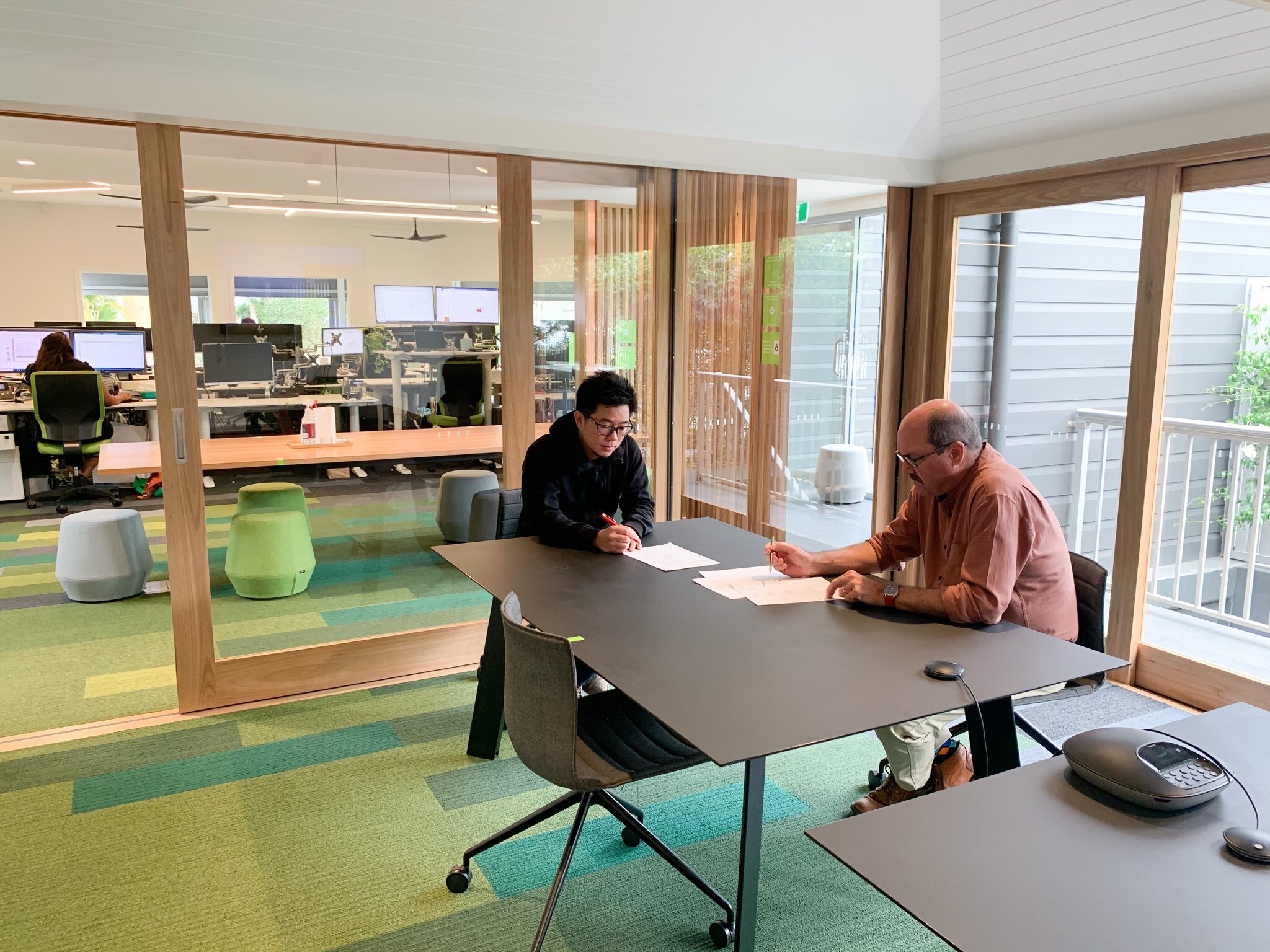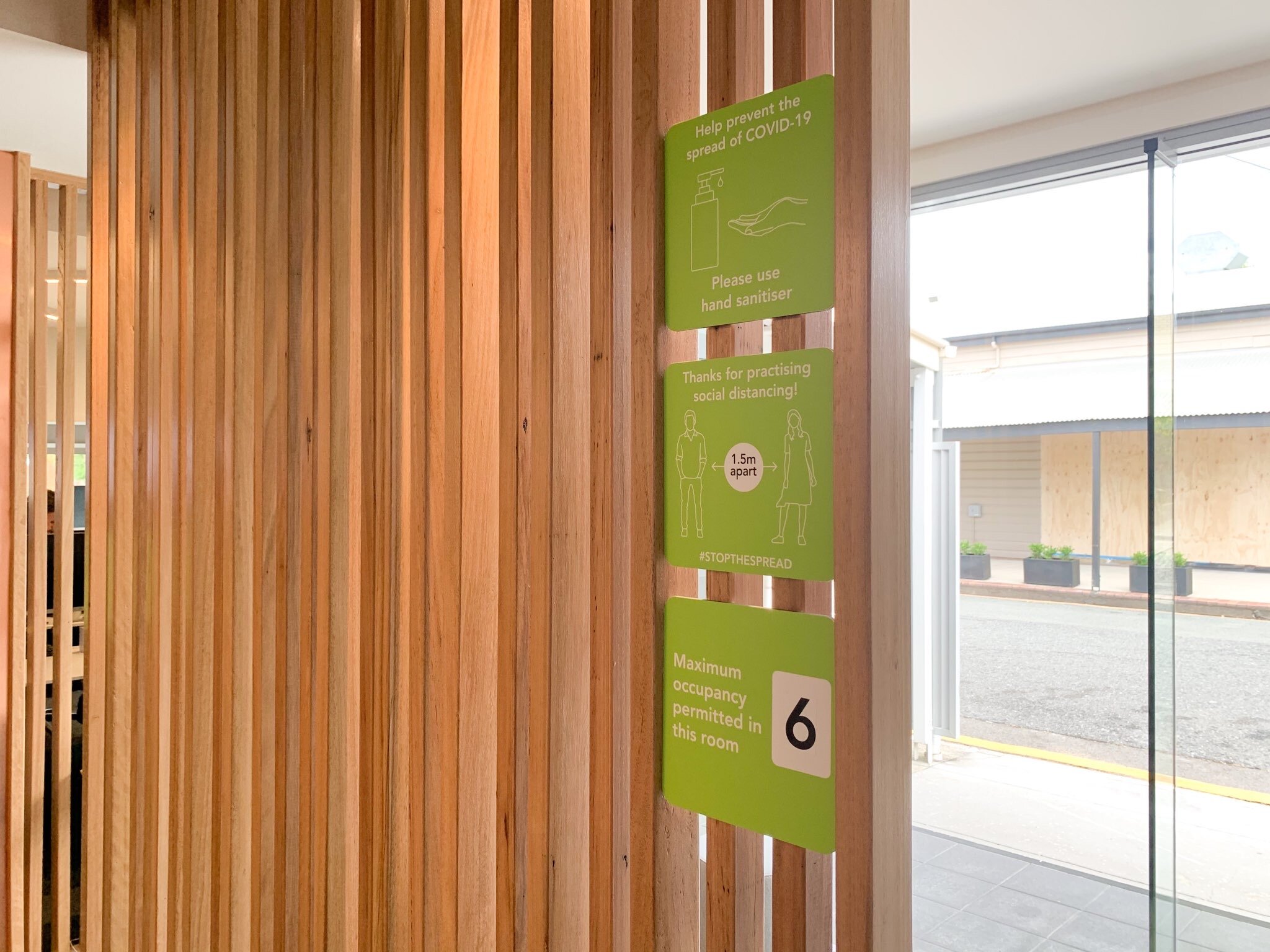The COVID-19 pandemic has resulted in significant changes to the way we all work and operate. To explore these changes in more detail and look at how they will impact commercial design moving forward, we sat down with Senior Interior Designer, Gohta Shiraishi, to get his take on design in a post-COVID world.
How do you think the COVID-19 pandemic has changed commercial design?
Pre-COVID, the recent trend has been for many corporate organisations to consolidate their property portfolios and centralise their operations. Where previously they may have had several offices scattered around the metro area, many corporations have closed their scattered offices and moved their operations to large buildings in the CBD. They have been able to save real estate costs and operational costs with this consolidation with the added benefit of the prestige that CBD addresses bring.
But with the COVID-19 pandemic I think there will be a reversal of this mentality. Scattered offices in the outer urban areas provide a lot of potential benefits to their employees, mostly around commuting. In a post COVID world there will be more reluctance to use mass public transport and many workers will probably prefer closer workplaces that they can drive or better yet cycle to.
The ‘hub and spoke’ model will greatly facilitate this arrangement and help reduce the movement of people. This will be beneficial not only for future pandemics but also in easing the strain on our public transport system and road networks.
I believe the greatest change in commercial design will be driven by the collective workforce’s desire to have flexible working arrangements. We are likely to see fewer workstations on-site and more collaborative working spaces to support new working arrangements. There will be more digital connectivity to allow people to work from anywhere and potentially smaller office footprints with more sub-lease arrangements to streamline corporate property assets.
How do you think the corporate world will respond to the new flexible model of working?
I believe that mixed working (home and in the office) is here to stay. The technology to be able to perform professional services work remotely has been around for quite some time; however, there has been a widespread reluctance to adopt it at such a broad scale. The COVID-19 paradigm has forced professional industries to adapt to a ‘working from home’ model and the last few months has proven that it can work just fine.
According to recent surveys conducted by WKspace based in the UK, most workers would prefer a mixed week of days in the office and days working from home in the post COVID world. Almost 50% of their respondents reported a preference for 2-3 days in the office.
From the same studies, 70% of respondents prefer to perform concentrated working from home, and a similar percentage at 65% prefer to perform collaborative work in the office. Interestingly there was only a slight majority at 54% that would prefer to conduct meetings in the office, and 68% prefer to socialise with colleagues in the office as well.
Based on these findings it’s easy to see a future where office spaces are geared up to be more like collaboration hubs for teams to come together, meet, discuss, delegate and then return home to complete their allotted tasks if suitable.
An interesting outcome of this co blend working environment of some people being at home and in the office is how video conferencing (VC) is being treated. Pre-COVID it was very typical to hold larger meetings in conference rooms with VC feeds to other conference rooms in other offices.
But with a potential mix of people being onsite or working from home, this presents some interesting challenges to that VC working arrangement. There is a fear of exclusion that comes about if there are only a few participants that are on VC with the rest of the participants being in person.
Therefore, it has become almost policy in some organisations where if one person is dialling in individually then everyone must dial in individually from their own PC/laptops, even if they are onsite. This creates a more level meeting environment and is a great equaliser.
Looking at our own organisation, Guymer Bailey, as an example, when we have VC meetings with our Brisbane and Melbourne colleagues we often dial in individually on our own devices, this way it is easier for an individual to be heard no matter where their location is.
I anticipate that there will be more demand for individual VC solutions, webcams, and headsets. There will also be a need for improved internet connectivity to facilitate such arrangements. When it comes to network infrastructure, I believe there will be an even greater transition to cloud-based networking solutions to mitigate the bottlenecking of office VPN connections and the like.
What about hot desks, are they a thing of the past now or here to stay?
It is likely that hot desks will become even more common. Sharing spaces may seem counterintuitive at first, but if you think about it, it is much easier to enforce a clean desk policy with a hot desk than it is with a dedicated workstation per person. Hot desks force people to be more mindful of what items they need to get their work done and avoid the build-up of the clutter.
This will make it possible for more thorough cleaning to be performed overnight and will be more hygienic, so long as a thorough and regular cleaning regime is in place. Also, dedicated workstations take up more real estate and it is likely that it will only be used half the time. So, I believe hot desks are more likely to become the norm, but with careful cleaning and sanitisation protocols.
Are you finding projects are applying new design principles in response to COVID-19?
There have been several projects that are applying new design principles in response to COVID-19. Interestingly, most has been focused on immediate risk mitigation in the short and medium-term. So simple things like rearranging seating layouts to ensure social distancing and meeting the 4sqm per person density quotient.
Interestingly there is a collective expectation that there will be a return to normality, so long-term design planning has not been overly affected yet. In fact, some of our projects where we are performing COVID distancing modifications have funding contingencies to revert works back to a pre-COVID setting.
However, what we have seen is a greater priority put towards upgrading and future proofing ICT infrastructure to support remote working. Also, as the white-collar workforce transitions back to the office, we are already seeing staggered days of staff working onsite or from home to comply with distancing guidelines. As the world begins the road to recovery and as economic confidence returns, I believe it is likely that we will see the next revolution in office design come. I for one am very optimistic and excited about the future of commercial design.
About Gohta Shiraishi
Gohta Shiraishi has over 10 years’ experience in the retail and commercial interior design sectors. Having a background in Industrial Design, Gohta is highly focused on the human interface with the built environment and is passionate about creating well thought out design solutions that are as functional as they are aesthetically pleasing.





